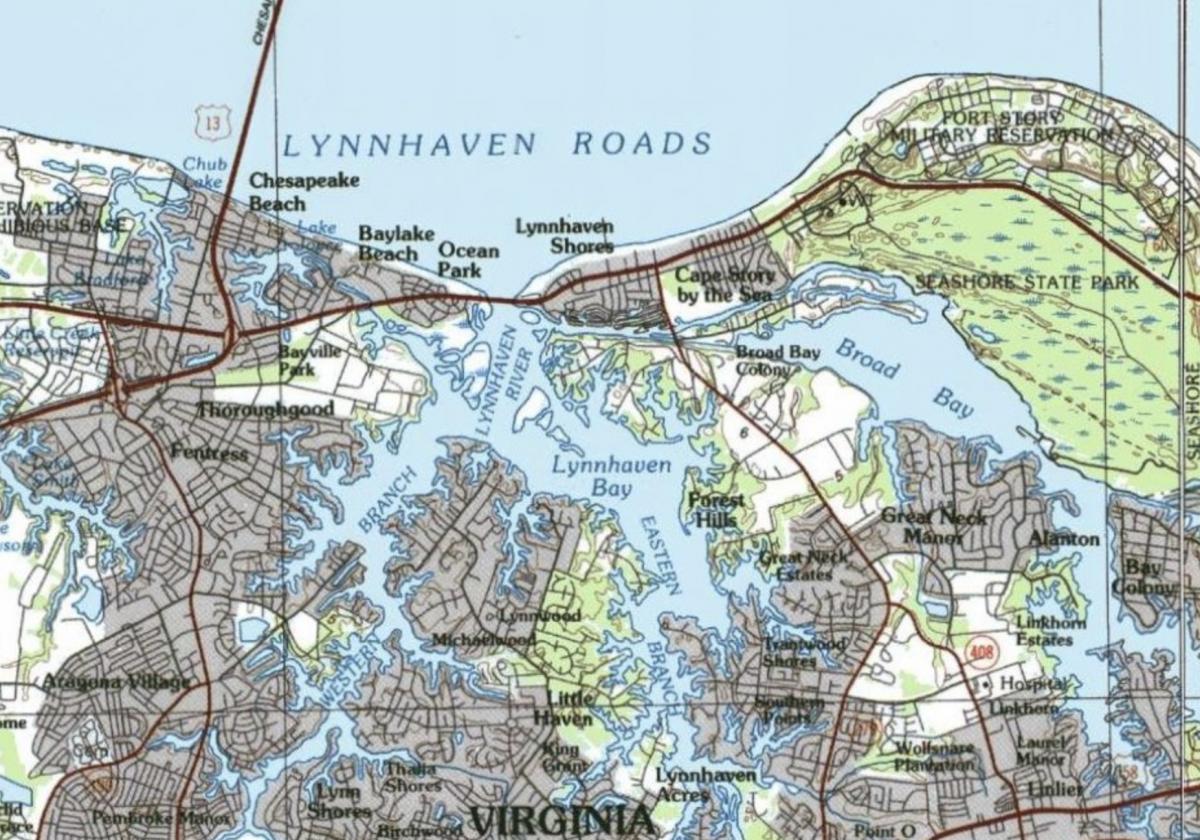After the U.S. Environmental Agency (EPA) announced they may extend a 2025 deadline for reducing pollution in the Chesapeake Bay; the Chesapeake Bay Foundation responded with “Going forward, the Chesapeake Bay states must demonstrate the leadership necessary to complete the job and the EPA must hold all of us accountable.” At the Delmarva Fisheries Association (DFA) we agree; especially if holding all of us accountable includes CBF. We also suggest CBF follow their own advice, since recent CBF actions speak louder than words on accountability.
Earlier this year, CBF participated in a joint oyster reef restoration project in Virginia. The project included rebuilding oyster reefs in estuaries in the Lynnhaven River which flows into the Chesapeake Bay.
After work began, the Virginia Marine Resources Commission (VMRC) determined the dumping of wire, steel, concrete, and asphalt in this CBF joint project posed a serious threat to water quality and public health. VMRC was especially concerned after detecting toxic polyaromatic hydrocarbons (which are harmful to human and aquatic life) in the asphalt and concrete rubble. VMRC concluded asphalt material never belongs in any aquatic environment.
VMRC also determined dumped concrete rubble crushed a twenty-five-year-old existing oyster sanctuary reef, rubble was dumped outside of the permitted area, and one rebuilt reef was higher than permitted.
Based on the above, VMRC ordered a halt to all oyster restoration work on this project. VMRC revoked CBF permits authorizing the reef construction and determined CBF needed a new application to resume work at these reef sites in the future. CBF was to remove all the dumped reef material to address public safety and address adverse water quality impacts. Before removal began, CBF was to submit a remediation plan to VMRC, the Virginia Department of Environmental Quality and the U.S. Army Corps of Engineers for approval.
Violations of VMRC orders, rules, regulations or permit conditions could result in a maximum fine of $25,000 for each day of violation. The CBF response is illustrative of a do as I say, not as I do guiding principle.
CBF responded with “We are surprised and disappointed by this enforcement action.”
No remorse. No apology. No acknowledgement that CBF is responsible for the cost of removal of 4,200 tons of toxic material that CBF never should have dumped in the first place.
What is even more troubling was CBF’S response to VMRC where CBF suggested a “science-based” alternative, proposing to clean unauthorized materials from two of the reefs and remove just one. CBF argued that approach would protect water quality and habitat while allowing for these reefs to remain in place to support thriving oyster populations. CBF claimed removing all 4,200 tons of recycled concrete could cost them from $1 million to $2.5 million.
VMRC rejected the CBF alternative and directed CBF to submit a detailed plan, including signed contracts to have the reefs dredged up from the bottom of the river.
CBF’s terse statement to that decision was they are “working with marine contractors and others to address the Lynnhaven oyster reefs as VMRC has directed.” Their spokesperson offered no other details.
Clearly CBF was not only surprised and disappointed to be cited from VMRC’s oversight and accountability actions. Apparently, CBF was also surprised and disappointed to be caught.
The bottom line is costs of removal could be and should be borne by a “not for profit” organization that receives grants and public donations that results in helping CBF having a 28 million dollar annual operating budget, a 55 million dollar endowment, net assets of approximately 120 million dollars, money in two offshore bank accounts, approximately 200 employees and offices in Annapolis MD, Easton MD, Harrisburg PA, and Richmond VA.
Virginia state senator Bill DeSteph said it best in his statement on this matter. “People were especially disappointed to learn that the Chesapeake Bay Foundation and Lynnhaven River Now had caused damage to the very waterways they are entrusted to protect.”
NOW is the time for research and answers on the following questions on all Chesapeake Bay restoration projects.
How many other CBF Bay restoration projects have not been or are not being done properly?
How many tax dollars, public grant dollars and private grant dollars have gone to CBF without proper oversight and accountability for environmentally safe and measurable Bay restoration results?
What have been the measurable results of all CBF Bay restoration efforts?
How do CBF results compare to all environmentally sound Bay restoration efforts by watermen and waterwomen?
What government policies and procedures are in place or needed to ensure timely and proper oversight on every Bay restoration project?
Everyone interested in the Bay and the Bay watershed deserve answers to these questions sooner rather than later.
Rob Newberry
Chair, Delmarva Fisheries Association,Inc.



Write a Letter to the Editor on this Article
We encourage readers to offer their point of view on this article by submitting the following form. Editing is sometimes necessary and is done at the discretion of the editorial staff.